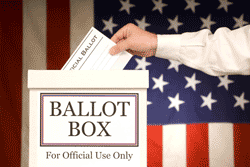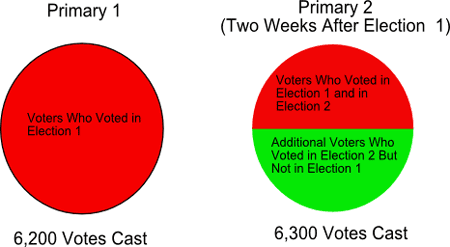Your Trusted Source For
Florida Voter Lists
Quality Voters,
Frequent Voters,
Likely Voters
 We are not just data vendors. We view ourselves as an integral part of most campaigns.
We are not just data vendors. We view ourselves as an integral part of most campaigns.
We have structured our prices to allow more candidates to be able to afford the technology needed to run a campaign.
Data will be the least expensive part of any campaign. If you cannot afford the data, you probably should not be running for office. It is the cornerstone of any successful campaign
Pricing is tiered to allow everyone to participate in the democratic process to the extent of their financial ability.
Axiom
There is one basic truth about voters who vote that we can capitalize on from a statistical or data perspective, and here it is mathematical terms:
The only consistent method of identifying voters who are likely to vote in an upcoming election is to determine how frequently they voted in multiple prior elections for which they were eligible to vote.
Another way of stating this is that the likelihood that a specific voter will turn out for an upcoming election is not a question of whether or not the voter voted in a particular election, but whether or not the voter has a history of voting often. We often refer to this as voter longevity.
Quality Ranking for Voters
Campaign Data has developed a quality ranking system which assigns a numerical ranking of 0 through 5 to each voter. This ranking reflects how many times a voter actually voted in the last five elections for which he or she was eligible to vote. In other words a quality 3 voter voted in 3 out of 5 of the 5 elections for which they were eligible to vote.
Our analysis of numerous past elections reflects that a quality 3 or better voter will represent approximately 60% to 70% of those people who will turn out for any upcoming election, provided the election is not a gubernatorial or presidential election, or election of significant importance to the local constituency.
What Should Not Be An Alternative
Less accurate, and sometimes dramatically so, is targeting likely voters based on whether or not they voted in a particular past election. For example; a candidate for a municipal commission seat might surmise that everyone who voted in the last election held for that commission seat, four years ago, would surely vote in an upcoming identical election. This is simply not true, and it is not as consistent a determining factor as targeting voters with a history of voting.
Choosing to target voters who voted in a particular election is a strategy used 15 years ago, long before the advent of personal computers being able to manipulate the voter data based on the results of multiple elections. In the old days, you could ask the elections department for voters who voted in a particular election, but not for voters who voted in the last two or more elections.
We can supply you with the voter records for those voters who voted in any particular election, but we urge you to not be tempted into believing that any particular race is more valuable than another.
Using Five Dates Rather Than Four or Six
Statistically, we have found that identifying future voters based on whether or not they voted in the last four (4), or six (6) elections is as accurate as basing their future attendance based on five (5) prior elections. With four elections, however, the lack of granularity tends to negatively impact campaign budgeting, because the spread between the count of the highest quality voters versus the count of the lowest quality is smaller. It will cost more to mail to your best voters using four dates.
By granularity we mean that 5 splits rather than 4 splits give us finer control over the counts of the voters. In other words, using four elections, the count of quality 3 plus voters is larger than the count of of quality 3 plus voters using five elections.
Using a quality ranking based on six (6) elections adds the additional difficulty of identifying six timely past elections. The farther back, date wise, we go, the harder it is to establish a pattern of six relevant elections for every voter. Using four or five dates is as accurate, so why go to an extreme?
Again, I have found that quality 3+ voters using five past elections will represent between 60% and 70% of the voters who will vote in the next election. If using 4 divisions, quality 2 + voters may represent 65% to 75% of the turnout, but there is a significant additional cost to target this group.
Anecdotal Substantiation
About 12 years ago, we worked on a campaign where there were two primary elections and a final election, with the same universe of voters, staged two weeks apart. The stakes were the same for both elections, and there was no "issue" on the ballot, only candidates. The primaries were for the parties, and if no one got 50% on the first round, there was a second runoff primary between the two top vote-getters. Subsequently there was a final runoff between the Republican and the Democratic primary winning candidates.
The evening after the first election, we had coffee with a longtime national pollster out of Washington who had worked on the campaign, as well as Professor Dario Moreno from Florida International University. The topic came up of which voters we should target for the next primary election in two weeks, to which the pollster replied, "That's easy. Everyone who voted in today's election." It appeared to make perfect sense, so we frantically obtained the election results from the Elections Department and processed the data.
We targeted only the voters who voted in the first primary. The analysis after the race surprised us. Only about 50% of the voters who turned out for the second primary had voted in the first primary. Virtually 50% of the the voters who showed up in the second primary, had not voted in the first primary. Post-analysis revealed that over 60% of the voters who voted in the second primary where quality 3 plus voters based on five elections before the first primary.

What is important to note is that if we had targeted quality 3 or better voters in the second primary, as we did in the first primary, we would have appealed to, and perhaps impacted, over 65% of the people who actually turned out to vote in the second primary. We missed 15% of the voters who voted because we considered only one race, the first primary, rather than relying on voter longevity.
Conclusions
1. Contrary to the belief of old time politicians and uninformed political operatives, there is scant statistical evidence that favoring a particular single election date in determining the propensity of a voter to turn out for an impending election will be as accurate as using voter longevity or history as a standard. There will always be exceptions, but the safest road is to always use voters who vote frequently.
2. The rationale for five elections rather than four or six elections is based on two observations: granularity is better with 5 rather than four voters, and it is harder to come up with 6 good dates than four or five good dates.
3. Correctly identifying probable voters is inversely proportional to voter turnout.
Contact Us | Terms of Use | Privacy Policy | Site Map
Copyright © 2009 Campaign Data, Inc All Rights Reserved